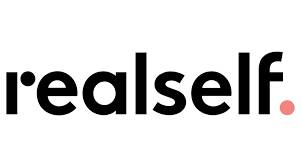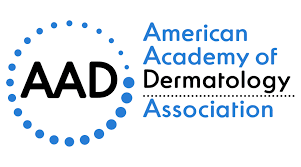PRP
PRP Therapy
The Blood-Derived Fountain of Youth
Amid the hustle and bustle of cutting-edge beauty treatments and anti-aging technologies, a procedure using an element as timeless as life itself has taken center stage—blood. Platelet-rich plasma (PRP) therapy, aptly tagged as ‘liquid gold,’ marks a transformative era in cosmetic medicine, sparking conversations from dermatologists’ offices to women’s brunch tables and beyond.
PRP therapy, whose popularity was first stoked by athletes aiming for speedy recoveries, is now widely known as a non-surgical, organic approach to skin rejuvenation and hair loss treatment. An integral component of treatments like the Vampire Facelift, PRP has earned a resounding name in the aesthetic world for its seemingly magical properties. But is it all just clever branding, or is there hard science at work?
PRP is a high-concentration solution of platelets, a type of blood cell known for its wound-healing capabilities, obtained from a patient’s blood. A small blood sample is drawn, spun in a centrifuge to separate plasma and platelets from other cells, and then the platelet-rich plasma is ready for use. When reintroduced into the skin or scalp, this ‘liquid gold’ sets the stage for skin regeneration and hair restoration, effectively using the body’s repair mechanisms to reverse signs of aging.
Yet, despite its growing popularity and encouraging results, PRP therapy isn’t a one-size-fits-all treatment. It serves as a supplement, rather than a replacement, to a comprehensive skincare regimen and healthy lifestyle. Furthermore, individual results vary, and certain medical conditions may make some individuals ineligible for the procedure.
Let’s delve into the science of PRP. Platelets release growth factors that stimulate cell growth, collagen production, and the formation of new blood vessels. This regenerative cascade can help reduce the appearance of wrinkles, fine lines, acne scars, and even stimulate hair growth. By leveraging our body’s innate healing ability, PRP offers an alternative to synthetic fillers and invasive surgeries.
While critics point to the lack of large-scale, long-term studies on PRP’s effectiveness, supporters argue that the growing body of clinical trials and anecdotal evidence can’t be ignored. The American Society of Plastic Surgeons reports an uptick in PRP treatments—evidence of its rising appeal in the beauty industry.
Patients who opt for PRP laud its naturalness, reduced risk of allergic reactions, and the relatively swift procedure time. However, there are also downsides to consider, such as the need for multiple sessions, variability in results, and cost. At around $1,000 per session, this golden therapy doesn’t come cheap.
PRP, despite its ‘vampiric’ associations, doesn’t promise immortality or even perpetual youth. But for those seeking a science-backed, minimally invasive beauty treatment, it offers a promising avenue. As researchers continue to investigate and refine PRP therapy, we will hopefully witness the unfolding of its full potential in the beauty and wellness arena.
The journey to a more confident you starts with one decision. That is the decision to get treated, why wait Book Online today? If you’re on the fence or have questions brewing, remember: We at SullivanDermatology are always here to help.Videos
PRP
If you have skin issues like wrinkles, scars, or sun damage, or are dealing with hair loss or joint pain, consider a Platelet-Rich Plasma (PRP) treatment. It is particularly popular for three applications: PRP injections for joint healing, PRP with microneedling for skin rejuvenation, and PRP facial for improved complexion.
The PRP injection promotes healing by leveraging the body’s natural regenerative capabilities. Hair loss patients and those with joint injuries especially stand to benefit from this innovative treatment. Unlike most treatments, PRP harnesses the power of your body’s own resources, reducing potential side effects.
PRP works by first extracting a small amount of the patient’s own blood. This blood is then spun in a centrifuge to separate the platelet-rich plasma from the other components. The resulting PRP can be used in two main ways – as a PRP injection directly into damaged joints or hair follicles, or in combination with microneedling for skin conditions.
PRP with microneedling involves creating small punctures in the skin’s surface, after which the PRP is applied. This encourages collagen production, skin tightening, and overall rejuvenation. Similarly, a PRP facial also uses this plasma, but instead of microneedling, the PRP is typically combined with a topical solution for application.
Patients often report seeing noticeable improvements within a few weeks of PRP treatments. For PRP injections, pain is often reduced and mobility increased. For PRP with microneedling, patients report smoother skin and reduced appearance of scars. PRP facial recipients commonly see improved skin texture and a healthy, youthful glow.
However, results can vary and multiple treatments might be required for optimal benefits. As for PRP injection cost, it tends to fluctuate based on the complexity of the procedure and the number of sessions needed. It’s important to consult with your healthcare provider for an accurate cost estimate and to determine if PRP treatment is right for you.
In conclusion, whether it’s a PRP injection for joint pain or hair loss, PRP with microneedling for skin rejuvenation, or a PRP facial for enhanced complexion, PRP presents an exciting, natural solution to common aesthetic and health concerns. As always, consult with a qualified medical professional before embarking on any new treatment.
FAQs About PRP Therapy
Yes, PRP therapy is generally safe since it uses the patient's own blood. However, there may be risks such as infection, bruising, or swelling at the injection site.
PRP is commonly used in cosmetic medicine to treat wrinkles, fine lines, acne scars, and hair loss. It's also used in orthopedic medicine to aid the healing of injuries.
Most people only experience mild discomfort during the procedure. Topical anesthesia is usually applied to minimize pain.
The procedure typically takes about an hour, including blood extraction, preparation of PRP, and the actual injections.
The longevity of results varies, but they can typically last from several months to two years. Regular touch-up treatments can help maintain the effects.
The cost can vary depending on the provider, location, and the area being treated, but it generally ranges from $500 to $2,000 per session.
Side effects can include swelling, redness, bruising, and tenderness at the injection sites. These are usually temporary and resolve within a few days.
Individuals in good health seeking improvement in skin texture, tone, and elasticity or those experiencing hair thinning could benefit from PRP. However, individuals with certain medical conditions may be advised against it.
Most patients can return to regular activities immediately following the procedure. However, some temporary redness, swelling, or bruising may occur.
The FDA has approved the PRP preparation kits, but it does not regulate medical procedures. Therefore, while PRP preparation is FDA approved, the therapy itself is not explicitly approved or disapproved. As always, patients should discuss potential treatments thoroughly with their healthcare providers.





